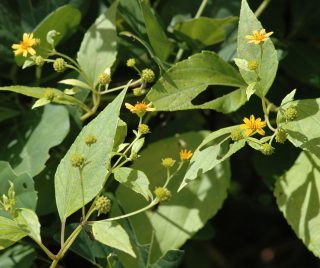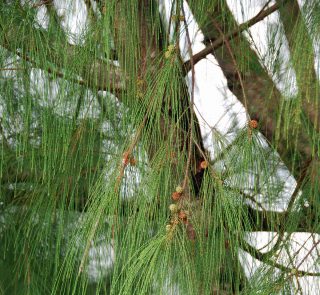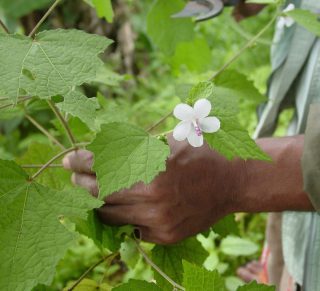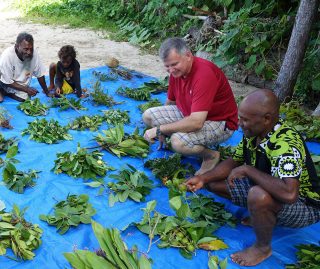Plants as Calendars
Posted in Interesting Plant Stories on March 13, 2018 by Science Talk
Michael J. Balick, Ph.D., is Vice President for Botanical Science and Director and Philecology Curator of the Institute of Economic Botany at The New York Botanical Garden, and Gregory M. Plunkett, Ph.D., is Director and Curator of the Botanical Garden’s Cullman Program for Molecular Systematics.

For most of us, calendars rule our lives. They allow us to organize our days, remind us of future appointments, and importantly, help us to carve out a space when we can take a break from the frenetic pace of life. Increasingly, they are stored on our computers or mobile phones, but this modern tool developed and evolved over a long period of human history.
Before the introduction of the Western calendar, people in Vanuatu reckoned time through their own observations of the natural world. Especially important were certain species of “calendar plants,” whose flowering or fruiting provided an indication of the change of seasons and cues for certain activities, such as gardening, hunting, and fishing. The use of plants as a guide for human activities is of great interest to us. During the past two years, we have been privileged to work with a team of people focused on understanding the diversity, distribution, uses, linguistics and conservation of the Vanuatu flora. Our work on the Tafean islands of Tanna and Aneityum involves collecting plants, mapping plant distributions, and gathering information on the local names of these plants and how people use them.

During our field research, we were excited to learn that a large number of plants on these two islands serve as calendar plants and play a vital role in traditional life in Vanuatu. For example, during a recent trip to Yakel village in Tanna, we learned that a small tree known as nakul in the Nahual language is used as a calendar plant. When this tree makes tiny white flowers, the local people know that it is time to plant sweet potatoes (Ipomoea batatas). This same plant, known as Boehmeria platyphylla by botanists, is called nukuas in the Neuai language of southwestern Tanna. In that region, the flowering of this plant indicated to local farmers that the important food plant taro (Colocasia esculenta) is ready to harvest.
In nearby Aneityum, the flowering of another plant (Gardenia tannaensis), known as neroa in the Aneityumese language, also signifies that taro is ready to be harvested. For traditional gardeners, it is necessary to pay attention to the flowering and fruiting patterns of many different species of plants because some native species are limited to only a certain part of an island or may be found only at particular elevations. Thus, the flowering time of several other native species of plants also provides signs that taro may be ready to harvest. These include the tree Geissois denhamii (nekroa in the language of Aneityum) and Metrosideros collina (nawawa in the Nafe language of Tanna). Similarly, the flowering or fruiting of other plant species may provide cues to the planting or harvesting of other garden crops. In West Tanna, for example, when the fruits of Murraya odorata (nipina in the Natuar language) turn red, the yam-harvesting season has arrived.

Marine resources provide another important source of food in Tafea province, and calendar plants can also help local people coordinate the timing of harvesting these animals. Sea turtles are a highly valued source of food, and the appearance of the yellow flowers of the herb Melanthera biflora (called intop asiej on Aneityum) provides an indication to the local people that sea turtles are very fat and ready to be hunted. This small plant, known in English as the “sea daisy,” is commonly found along the beach and other coastal areas, where it is tolerant of the ocean’s salt spray. Like many plants in Vanuatu, it has other traditional uses. Its leaves can be cooked and eaten or used as a food wrap for fish cooked in an earthen oven. Hedycarya dorstenioides (kapuapu in the Nafe language of Tanna) is another marine calendar plant. The flowering of this tree indicates that it is time to harvest sea urchins.
Even the changes of seasons have botanical cues. When the needles of the ubiquitous seaside tree Casuarina equisetifolia (inya in the Aneityum language and “she oak” in English) turn brown, it indicates that the season of higher temperatures has arrived and that people should not work as hard as they do during other times of the year, or they will not feel well. Conversely, the flowering of the orchid Epipogium roseum (kuanneteadem in the Neuai language) is an indication that the cold season is arriving in Southwest Tanna. In Aneityum, when the herb Urena lobata (namaka’ in the Aneityum language) has flowers and fruits, the danger of cyclone season has passed.

These are only a few of the many calendar plants that are used by the people of Vanuatu in their traditional reckoning of time and seasons. But like so much of life in the Pacific, these traditions are threatened by climate change. With changes to the patterns of plant distribution and abundance, including flowering and fruiting times, how will Ni-Vanuatu (the name for the native people of Vanuatu) know the proper times for their subsistence activities? Will the flowering and fruiting schedules of plants still be a reliable guide to seasonal endeavors? This is yet another reason to be concerned about the impacts of global climate change on people around the world, especially in the beautiful archipelago of Vanuatu.
______________________________________________________________________________________
Four years ago, Drs. Michael J. Balick and Gregory M. Plunkett helped to initiate a project to document the diversity and uses of the plants of Vanuatu, working with members of the Vanuatu National Herbarium (including curator Chanel Sam and assistant curator Philemon Ala), the Department of Forestry (especially Presley Dovo), and the Tafea Kajoral Senta (especially Jean-Pascal Wahe). They gratefully acknowledge the local people of Tanna and Aneityum who have provided this information, including Jimmy Iauimam, Toata Rupiim, and Toata Nalpalep (from Yakel village) John Pasua, Samuel Herwaen, Joseph Kema, and Benjamin Tom (from the Yenhup area), Jony Konapo, Nufunu Sakama, George Turiak, Jack Nakweren, Sam Nauka, Alick Raviris, Tom Kahi, Johnson Kamkari, Kasumartin, and Moses Kahu (from the Iatukwei area), Lui Noamel, Joe Natuma, David Tao, Jack Iawiah, and Natua Harry (from Lukwaria), Rawi Ames, Kaias Yauiko Nerkahoro, and Kasu Janet (from Ienehepe), and Titya Lalep, Reuben Neriam, Kieth Yaiyaho, Wopa Nasauman, and Charlie Nafarniyang (from Aneityum).
Drs. Balick and Plunkett are grateful to the Christensen Fund, The Critical Ecosystem Partnership Fund, The National Geographic Society, and The National Science Foundation for their generous support of our ongoing work in Vanuatu as well as to the people of Vanuatu for their partnership in this work.
This post is based on an article by the authors that was published in Island Life magazine. You can read an earlier post about Vanuatu’s “message plants” here.

